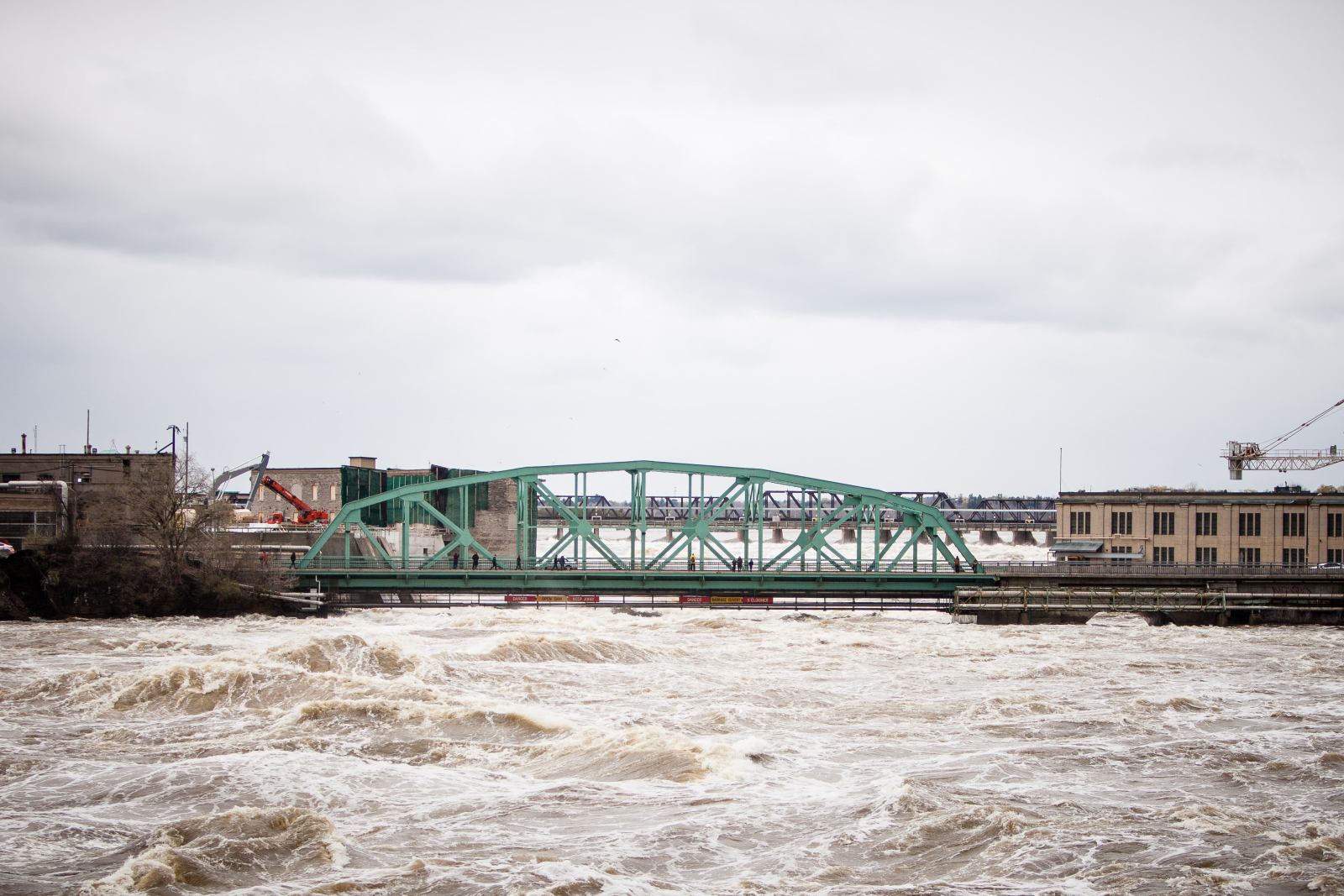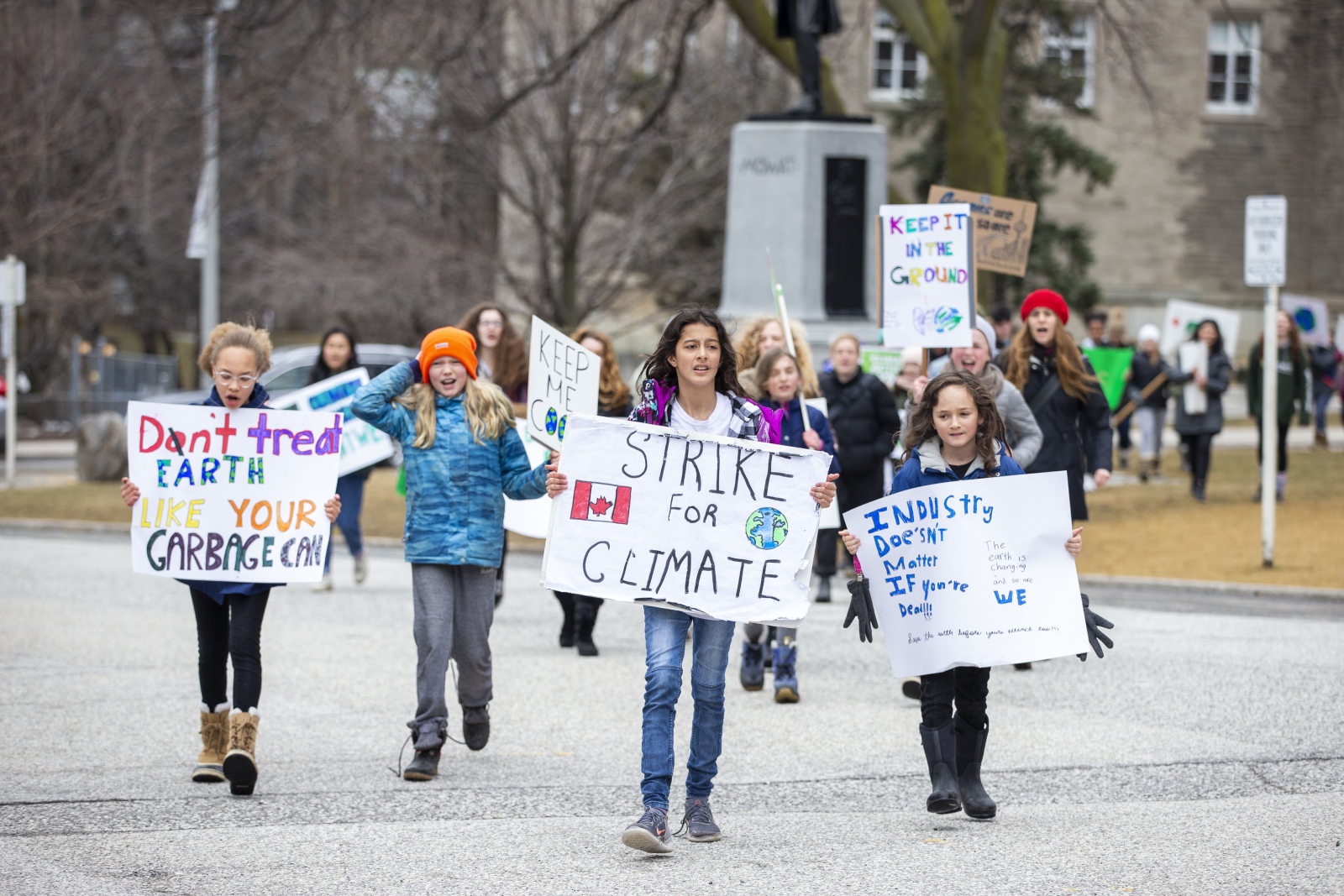 Water levels rise dangerously high below the Chaudière Bridge over the Ottawa River, between Gatineau and Ottawa, following spring flooding on May 8, 2017. File photo by Alex Tétreault
Water levels rise dangerously high below the Chaudière Bridge over the Ottawa River, between Gatineau and Ottawa, following spring flooding on May 8, 2017. File photo by Alex Tétreault
Canada is heating up at double the average rate of the planet, according to a stunning peer-reviewed scientific report involving dozens of government and academic authors, and it is likely that the majority of this warming was caused by human activities like burning fossil fuels.
Canada’s Changing Climate Report, released April 1, 2019, shows how climate change has already altered Canada and is expected to lead to heightened risks of heat waves, wildfires, floods and declining freshwater availability.
The report uses careful language to express varying levels of confidence in scientific research, showing how climate change has already altered Canada & is expected to lead to heightened risks of heat waves, wildfires, floods and declining freshwater
It found that Canada’s annual temperature over land has warmed on average 1.7 degrees Celsius between 1948 and 2016, while the average winter temperature has increased by 3.3 C. Although not uniform, that’s much more dramatic than the average warming around the world of between 0.8 C and 1.2 C as assessed by the Intergovernmental Panel on Climate Change.
For Northern Canada, the number is even starker: the region has warmed by 2.3 C, about three times global warming.
It also found more than half of the warming in Canada is “likely” due to human factors like burning fossil fuels such as gasoline that come from oil, gas and coal, which create heat-trapping carbon pollution.
The report is an overview and synthesis of published literature, similar to how the IPCC functions. As a result, it uses careful language to express varying levels of confidence in scientific research.
Overall, the scientists found the effects of climate change evident across the country, and that further warming over the next decades is already baked in due to pollution that has already been released into the atmosphere. MORE






